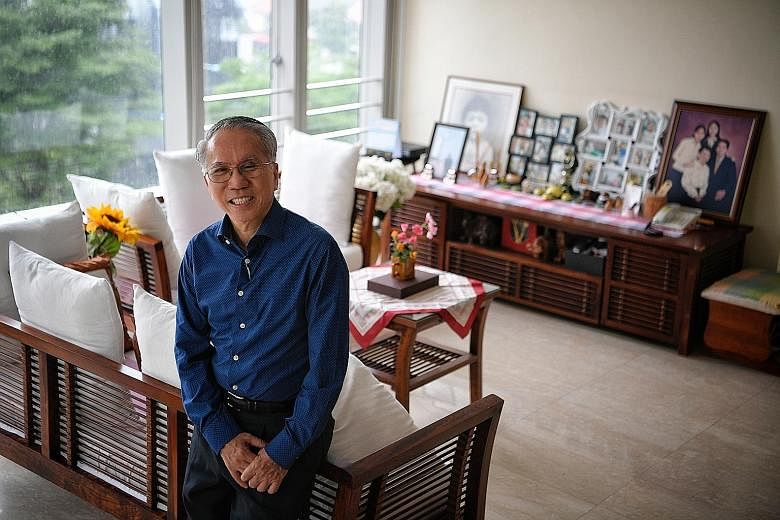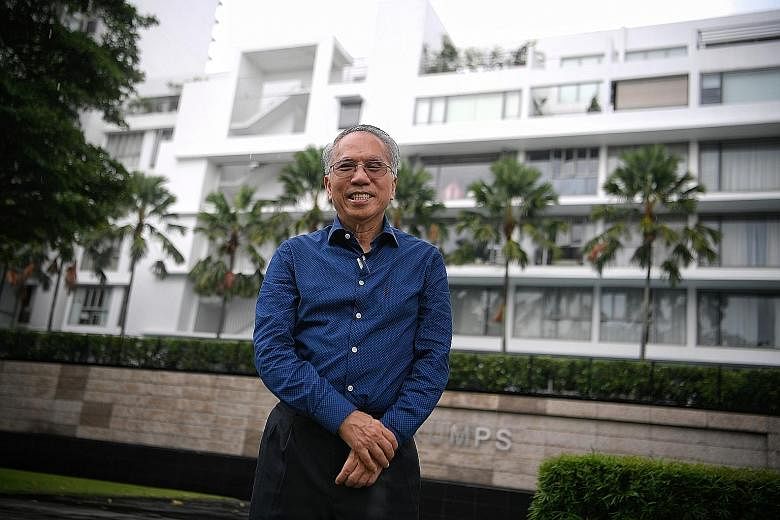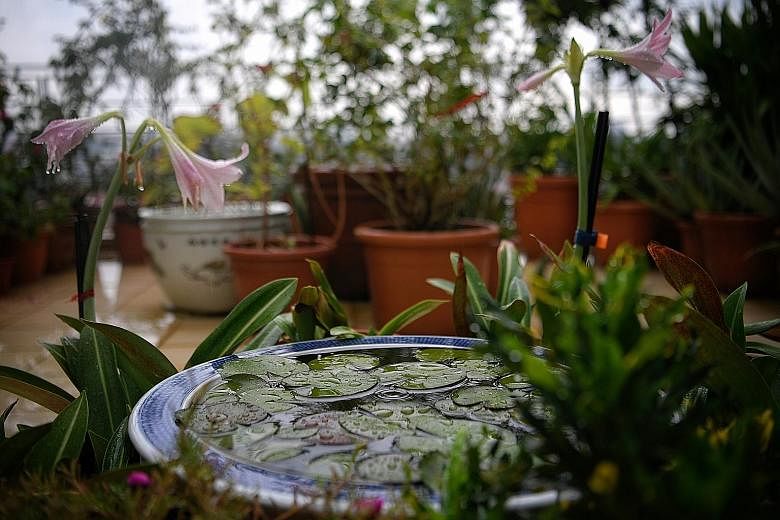Award-winning fund manager Tan Chong Koay once had to walk down 20 floors with his wife and dog because of tremors resulting from an earthquake in a neighbouring country. The experience convinced him to buy a unit on a much lower floor for his next residence.
Mr Tan, 67, also likes his home in close proximity to an MRT station because it ensures convenience when he needs to get to the airport promptly to catch his flights.
One of Singapore's pioneering boutique fund managers, Mr Tan is the founder of Pheim Asset Management (Asia) in Singapore, and founder and chief executive of Pheim Asset Management (Malaysia). He has an impressive 41-year track record of managing funds that have consistently won accolades for outperforming the market even during downturns.
For instance, Pheim's flagship fund - the Asean Emerging Companies Growth Fund - was ranked No. 1 among Asean equity funds by fund-rating firm Thomson Reuters Lipper for all the one-to 20-year periods on its 20th anniversary ending Feb 3, 2015. The fund registered a USD return of 497.37 per cent versus the FTSE All World return of 44.5 per cent. Recently, the Balanced Malaysia Islamic Fund was ranked No. 1 by Thomson Reuters Lipper for all the one-to 15-year periods as of September this year. The cumulative 15-year return in ringgit was 330.89 per cent versus the benchmark of 117.55 per cent.
The meticulous way Mr Tan manages his funds is reflected in how he manages his property portfolio.
"I believe that I shouldn't be overgeared because it is dangerous... I have a strong belief that there are two instruments that give you very good long-term returns as long as you don't go in at the highest point. They are stocks and properties," he said.
In July, Pheim launched the Pheim Asean All-Cap Equity Fund here. This was after Mr Tan received approval for his fund management licence in 2015, following the expiry of a prohibition order against him carrying out fund management activity here. The order came after he lost a market-rigging lawsuit in 2010.
Targeted at accredited investors, the minimum investment sum for the fund is US$100,000 (S$135,000).
Mr Tan, who is Malaysian and a Singapore permanent resident, is married to a Malaysian who is a housewife, and they have two daughters, aged 39 and 31.
His book, Rising Above Financial Storms, which outlines his investment philosophy, sold over 14,000 copies with profits going to charity.
Q Describe your residential property.
A My family and I live in a 2,500 sq ft, two-storey penthouse with three bedrooms in Jalan Kembangan. I bought this 99-year leasehold unit in 2004 for $1.04 million.
The property was initially marketed for $750 per square foot (psf) and I waited two to three years for it to drop to $550 psf before I made the purchase.
The main reason why I bought my present home is that it is next to the MRT. As I get older, I think I should be near the MRT. I fly a lot and I'm only four stops from Changi Airport.
The penthouse comes with a 900 sq ft garden where I practise my qigong daily for 30 minutes before I sleep. I love it because it is very breezy.
I live on the sixth floor. I don't like living on high floors because as you get older, all it takes is an electrical breakdown to annoy you (in the event the lifts can't be used).
Q What other properties - past and present - are in your property portfolio?
A In 1988, I bought a 3,200 sq ft freehold penthouse in East Coast for $623,000 and sold it in 2007 for $1.8 million.
In 2004 - after I bought the penthouse that I am living in - I bought a smaller 1,400 sq ft unit in the same development for $750,000. Both units were bought at $550 psf then and have since doubled to just above $1,100 psf. I'm renting the smaller unit out at about $3,500.
I also own a 2,200 sq ft three-bedroom condo in Kuala Lumpur, where I work once a week. I bought it at about RM900,000 about 22 years ago.
In 1994, I bought a two-storey 1,750 sq ft 99-year leasehold shophouse (heritage status) for $1.23 million. It's worth about $3.5 million now. This unit in Duxton Road has housed Pheim's Singapore office since 1995. I chose this unit as it is near a hotel where I can entertain my guests, there are five floors of covered carpark nearby, and it is located near an MRT. This provides easy access to the airport if there is a traffic jam on the roads.
Q Describe your property investing strategy.
A I buy properties because I need a place to stay in, and when I made more money, I put some in properties because I wanted to avoid conflict of interest since my two fund management companies invest in equities. You need knowledge and a bit of foresight when investing in properties. We were the first asset management firm in the Duxton area. Now there are many more.
Q What's your view of the property market?
A Singapore is among the best places for properties. There is a very efficient system here. It is so transparent and easy to sell with no "monkey business". I think the Singapore property market is at a reasonable price. The other places are London, and Tokyo, which is not expensive but earthquake-prone. Of course, you have to take a forex risk.
Q What's your financing strategy?
A I will not borrow more than half of the purchase price. Gearing is very dangerous. You can have financial problems if the property value drops because of, say, government action, natural floods and so on.
My properties are all paid up.
Q Do you have insurance cover for your property?
A It is important that I have insurance for every property I own. This is how you protect yourself from certain risks. This includes insurance cover for fire, contents and liability, which is important particularly for my office.
Q What's your overall investing strategy?
A Never fully invest at all times. This means that every time the market goes down, I have cash to invest.
Property and stock markets are not efficient, so you need to look for good buys, which always come when the market is depressed. Where there is crisis, there is opportunity.
You must do some research, have affordability and be willing to take longer-term views and develop skills to make money. For example, develop the ability to read major trends right when the market is depressed.
Q My dream home is....
A I'm quite happy to be where I am. I need only a safe and clean place where my family is.




